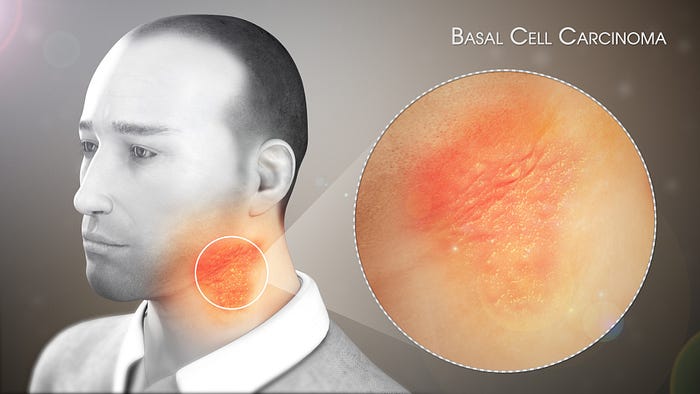- “Empowering Emergency Medicine Physicians”
- “Queue Management Software and Hospitalists in Modern Healthcare”
- “Enhancing-Pediatric-Infectious-Disease-Care”
- “Revolutionizing-Geriatric-Care”
- “Optimizing-Patient-Care-in-Pediatric-Rheumatology”
- “Pediatric-Pulmonology-Care”
- “Revolutionizing-Pediatric-Gastroenterology”
- “Enhancing-Pediatric-Neurology-Care”
- “Optimizing-Pediatric-Cardiology”
- “Enhancing-Pediatric-Endocrinology-Care”
- “Empowering-Neonatologists-with-EMR-Software”
- “Pediatrics-in-Focus”
- “Empowering-Neurologists-with-Electronic-Prescriptions”
- “Streamlining-Dermatology-Practice”
- “Streamlining-Psychiatry-Practice”
- “A-Game-Changer-for-Infectious-Disease-Specialists”
- “Allergist/Immunologist-Practices-with-QME-EMR-and-Hospital-Management-Systems”
- “Empowering-Hematologists-and-Revolutionizing-Healthcare-Management”
- “Optimizing-Healthcare-with-HMIS”
- “Transforming-Healthcare-with-Endocrinologist”
- “Healthcare-Management-with-QMe-EMR-for-Nephrologists”
- “Revolutionizing-Healthcare-Management-with-Cardiologist”
- “Streamlining-Operations-with-Queue-Management-Software”
- “Optimizing-Healthcare-Delivery”
- “Transforming-Healthcare-Management”
- HMIS And Decision Support Systems
- Dengue Unveiled: An Overview of Causes, Symptoms, and Prevention.
- Dengue Fever: Unraveling the Mosquito-Borne Menace.
- HMIS-and-Continuity-of-Care
- Project-Management-for-Successful-HMIS
- Catalysts of Wellness: The Transformative Power of Diagnosis and Screening in Healthcare
- Patient-Data-Management
- Guardians of Healthcare: The Vital Role of Fraud Detection in Ensuring Ethical Care
- Unlocking Insights
- Healthcare in the Digital Age: The History Of Development Of HMIS
- Transforming Healthcare
- Safeguarding-HMIS-Data
- HMIS-Integration-Challenges
- ANXIETY UNVEILED: CONQUERING FEARS AND CULTIVATING CALM.
- BEYOND THE BLUE: EMBRACING LIGHT ON THE PATH OF DEPRESSION.
- BEYOND THE BLUE: EMBRACING LIGHT ON THE PATH OF DEPRESSION.
- HMIS and Resource Allocation
- HMIS Data Accuracy and Integrity
- SOOTHING THE SILENT PAIN: UNDERSTANDING VULVODYNIA.
- Impact of HMIS on OPD Operations
- In Patient Management Through Health Management
- WITHIN THE SHADOWS: UNDERSTANDING BRAIN TUMOURS FROM WITHIN
- HMIS-and-Health-Insurance-Integration
- HMIS-Data-Analytics-for-Preventive-Care
- SILENT INTRUDERS: UNRAVELLING THE MYSTERIES OF PELVIC INFLAMMATORY DISEASE
- BREAKING FREE: OVERCOMING THE HURDLE OF URINARY INCONTINENCE
- “HMIS and Doctor-Patient Communication”
- HEALING INSIGHTS: THE POWER OF THE HOSPITAL MANAGEMENT INFORMATION SYSTEM.
- SOLVING THE OVARIAN PUZZLE:UNDERSTANDING OVARIAN CYST INSIDE OUT
- Usability And User Experience In HMIS
- WARRIOR’S BATTLE: TRIUMPHING OVER UTERINE CANCER
- POLYCYSTIC OVARY PUZZLE: UNRAVELLING THE ENIGMA OF PCOS
- Unlocking-the-Potential-of-HMIS-Data-for Medical-Research-and-Healthcare-Policy-Enhancement
- Feminine Health Unplugged: Empowering Women in Vaginal Infection Awareness
- Revitalizing Feminine Comfort: A Journey Through Vaginal Wellness.
- HMIS Vendor Selection Guide
- UNDERSTANDING FIBROIDS: NAVIGATING THE INTRICACIES OF UTERINE HEALTH.
- Best Practices for Data Migration in Healthcare Management Information Systems (HMIS)
- CONCEIVING HOPE: NAVIGATING THE JOURNEY OF INFERTILITY
- MENSTRUAL IRREGULARITIES: CAUSES AND TREATMENT
- RISING ABOVE: EMPOWERING WOMEN WITH PELVIC ORGAN PROLAPSE
- Leveraging HMIS for Enhanced Public Health Management and Disease Surveillance
- Challenges and Benefits of Implementing HMIS in Rural and Remote Healthcare Settings
- Securing Healthcare Continuity
- Pancreatic Cancer
- Lymphoma
- Leukemia
- Bladder Cancer
- COLORECTAL CANCER
- All about Prostate Cancer
- Fighting out the Disease of Lung Cancer
- Advances in Breast Cancer Treatment: A Comprehensive Guide
- Autism Spectrum Disorder (ASD)
- EHR SYMPHONY: HARMONIZING HEALTHCARE THROUGH ELECTRONIC RECORDS .
- Understanding Testicular Cancer: Detection, Treatment And Awareness.
- Childhood Obesity
- Kawasaki Disease
- Eczema (Atopic Dermatitis)
- Understanding Bone Cancer: A Brief Overview.
- Virtual Healing: Navigating Healthcare Through Telemedicine and Telehealth.
- Attention-Deficit/Hyperactivity Disorder (ADHD)
- PELVIC PAIN:CAUSES SYMPTOMS AND PREVENTIONS
- Type 1 Diabetes: Causes, Symptoms, and Treatment
- Gastroesophageal Reflux Disease (GERD)
- Battling Pneumonia: Unveiling the Stealthy Invader of the Lungs
- Unravelling the Complexity of Allergic Reactions: Understanding, Managing, and Thriving
- Rashes (Eczema, Dermatitis)
- UNDERSTANDING CERVICAL DYSPLASIA: CAUSES, SYMPTOMS AND MANAGEMENT
- Chicken Pox
- Endometriosis Unmasked: A Closer Look at the Silent Struggle
- Croup
- Hand, Foot and Mouth Disease (HFMD)
- THE DAWNING OF A NEW ERA: EMBRACING THE JOURNEY OF MENOPAUSE
- Urinary Tract Infections (UTIs)
- Strep Throat (Streptococcal Pharyngitis)
- Understanding Otitis Media(Ear Infection)
- 28th July In medical history!!
- Influenza (Flu) - Symptoms, Prevention and Management
- 27th July In medical history!!
- Respiratory Syncytial Virus (RSV) Infection
- SIGNIFICANCE AND ADVANTAGES OF HMIS: A DETAILED ANALYSIS
- Beyond Boundaries: Transforming Healthcare with Virtual Reality
- TRACK YOUR LIFE : A DETAILED UNDERSTANDING ON HEALTH MONITORING SYSTEM
- EXPLORING BENEATH THE SURFACE: UNDERSTANDING BARTHOLIN CYSTS AND ABSCESSES
- GUARDING GUT HEALTH: YOUR GUIDE TO POTENTIAL CROHN’S DISEASE PREVENTION.
- PATHWAYS OF HOPE: NAVIGATING THE CHALLENGES OF ESOPHAGEAL CANCER
- Gastric Battles: Confronting Stomach Cancer Head-On.
- HMIS IN SMALL CLINICS: A STEP TO A BETTER FUTURE
- Harmonizing Your Cycle: A Journey to Menstrual Health and Balance.
- Respiratory Syncytial Virus (RSV) Infection
- GUARDING OUR INTIMATE WORLD: A CLOSER LOOK AT STI
- Real-World HMIS Implementation Case Studies: Using Data to Transform Healthcare
- Gastroenteritis (Stomach Flu)
- Asthama - The Anatomy Of Breathing
- Influenza - A Silent Intruder
- Breast Cancer
Skin Cancer (Melanoma)
Skin Cancer (Melanoma)
Melanoma, the deadliest form of skin cancer, arises from the uncontrolled growth of melanocytes — the cells responsible for skin pigmentation. It poses a significant public health concern due to its aggressive nature and potential to metastasize to other organs. Typically triggered by excessive ultraviolet (UV) exposure, melanoma can manifest as abnormal moles or lesions, demanding early detection for optimal treatment outcomes. This introduction highlights the urgency of understanding melanoma’s risk factors, pathogenesis, and clinical presentation to improve its healthcare management. Through effective prevention strategies, heightened public awareness, and advances in medical interventions, the battle against melanoma continues to evolve, emphasizing the importance of timely intervention and education.
Types of Skin Cancer

Skin cancer, a prevalent healthcare issue, encompasses various types, with melanoma and non-melanoma being prominent categories. Melanoma arises from melanocytes, while non-melanoma types, including basal cell carcinoma and squamous cell carcinoma, develop from other skin cells. Melanoma’s aggressive nature demands early diagnosis and intervention due to its potential to metastasize. Non-melanoma variants are generally less aggressive but still require timely treatment. These diverse skin cancer types underscore the significance of dermatological healthcare, urging regular skin examinations, preventive measures, and patient education. By addressing each type’s unique characteristics and risk factors, healthcare professionals can enhance patient outcomes and reduce the burden of skin cancer on individuals and the healthcare system.
Risk Factors
Several risk factors contribute to the development of skin cancer, emphasizing the need for proactive preventive measures. Excessive exposure to ultraviolet (UV) radiation, whether from the sun or artificial sources like tanning beds, is a primary factor. Fair skin, especially when coupled with a history of sunburns, increases vulnerability. Individuals with numerous moles or atypical nevi, as well as those with a family history of skin cancer, face elevated risks. Genetic factors and certain medical conditions can also play a role. Recognizing these risk factors empowers individuals to adopt sun safety practices, undergo regular screenings, and seek healthcare guidance to mitigate their susceptibility to skin cancer.
Pathogenesis and Molecular Mechanisms
Skin cancer’s pathogenesis involves intricate molecular mechanisms triggered by DNA damage and mutations. Ultraviolet (UV) radiation, a primary culprit, induces genetic alterations in skin cells, disrupting the cell cycle and apoptosis. Genetic mutations, such as those affecting BRAF and NRAS genes, activate signaling pathways that promote uncontrolled growth and evade immune surveillance. Dysregulation of these processes fosters the transformation of normal cells into malignant ones, ultimately giving rise to skin cancer. Understanding these molecular intricacies is crucial for targeted therapies and interventions aimed at halting the aberrant signaling and promoting apoptosis in cancer cells, thereby offering promising avenues for improved treatment strategies.
Clinical Presentation

Skin cancer’s clinical presentation varies, necessitating vigilant observation. Melanoma often appears as atypical moles or lesions that exhibit the ABCDE (asymmetry, border irregularity, color variation, diameter >6mm, evolving) characteristics. Non-melanoma types like basal cell carcinoma may present as pearly nodules, while squamous cell carcinoma can manifest as scaly patches. Early detection is vital for effective hospital management. Timely biopsies and histopathological analyses confirm diagnosis and staging, guiding appropriate treatment decisions. Regular self-examinations and professional dermatological evaluations aid in identifying suspicious growths, enabling early intervention and potentially reducing the need for extensive hospital-based interventions.
Diagnosis and Staging
Diagnosis and staging of skin cancer are pivotal aspects of effective healthcare management. Dermatological examinations and biopsies facilitate accurate identification and classification. Staging, often following the AJCC system, assesses tumor size, lymph node involvement, and metastasis extent. Precise staging guides treatment strategies and prognosis prediction. Advanced imaging technologies aid in evaluating cancer’s spread. Early diagnosis through these measures optimizes healthcare management by enabling timely interventions, potentially reducing invasive treatments and improving patient outcomes. Regular screenings and collaboration between medical professionals ensure thorough diagnosis, appropriate staging, and well-informed decisions that align with the best practices in skin cancer healthcare management.
Treatment Options
Skin cancer treatment options encompass a multidisciplinary approach tailored to the cancer type and stage. Surgical interventions involve excisional biopsy, Mohs surgery for precise removal, and lymph node dissection for metastatic cases. Targeted therapy utilizes BRAF and MEK inhibitors to block specific mutations. Immunotherapy employs checkpoint inhibitors and T cell therapy to enhance the immune response against cancer cells. Chemotherapy and radiation therapy may be considered for advanced cases. Evolving treatments, like personalized therapies and clinical trials, offer promising avenues. Choosing the appropriate treatment strategy depends on factors such as cancer progression and patient health. Collaborative efforts among healthcare professionals ensure comprehensive care for optimal treatment outcomes.
Prognosis and Survival Rates

Prognosis for skin cancer hinges on factors like cancer type, stage, and patient health. Melanoma’s prognosis varies across stages, with localized cases having better survival rates than metastatic ones. Early detection and intervention significantly enhance outcomes. Five-year survival rates offer insights: localized melanoma averages high survival, whereas advanced stages pose greater challenges. Non-melanoma types generally have favorable prognoses due to their lower metastatic potential. Prognostic tools, genetic testing, and personalized medicine contribute to more accurate predictions. Patient education, routine check-ups, and adherence to treatment plans play crucial roles in improving prognosis and overall survival rates in skin cancer cases.
Prevention and Sun Safety

Preventing skin cancer relies on practicing effective sun safety measures. These include applying broad-spectrum sunscreen, wearing protective clothing, and seeking shade during peak sunlight hours. Avoiding tanning beds and promoting awareness about UV radiation risks are vital. Hospital management plays a pivotal role in prevention by integrating educational programs into patient care. Hospitals can offer skin cancer screenings, disseminate sun safety information, and encourage regular check-ups. Healthcare providers can educate patients on self-examination techniques and the importance of early detection. By actively engaging in sun safety advocacy, hospital management contributes to reducing skin cancer incidence and promoting overall community health.
Public Awareness and Education
Public awareness and education initiatives are critical in curbing skin cancer’s prevalence. Campaigns, workshops, and educational materials raise consciousness about risk factors, early detection, and sun safety practices. Promoting the ABCDE rule for mole assessment empowers individuals to identify potential warning signs. Schools, community centers, and healthcare providers play essential roles in disseminating information. Increased public awareness fosters proactive behavior, encouraging regular skin checks, preventive measures, and timely medical consultations. By equipping individuals with knowledge, public awareness efforts contribute to a healthier society, reducing the burden of skin cancer and improving long-term outcomes through informed decision-making.
Conclusion

In conclusion, addressing the challenges of skin cancer necessitates a multi-faceted approach encompassing early detection, education, and effective management. QMe Hospital Management and Information System’s commitment to patient care is exemplified through proactive awareness campaigns, regular screenings, and leveraging innovative Information Software. This software streamlines patient records, aids in risk assessment, and facilitates personalized treatment plans. By integrating hospital management with cutting-edge technology, we enhance patient outcomes and empower individuals to take charge of their skin health. Through continued collaboration among healthcare providers, public awareness initiatives, and technology-driven solutions, we can make significant strides in preventing, diagnosing, and treating skin cancer, ensuring a healthier future for all.
- “Empowering Emergency Medicine Physicians”
- “Queue Management Software and Hospitalists in Modern Healthcare”
- “Enhancing-Pediatric-Infectious-Disease-Care”
- “Revolutionizing-Geriatric-Care”
- “Optimizing-Patient-Care-in-Pediatric-Rheumatology”
- “Pediatric-Pulmonology-Care”
- “Revolutionizing-Pediatric-Gastroenterology”
- “Enhancing-Pediatric-Neurology-Care”
- “Optimizing-Pediatric-Cardiology”
- “Enhancing-Pediatric-Endocrinology-Care”
- “Empowering-Neonatologists-with-EMR-Software”
- “Pediatrics-in-Focus”
- “Empowering-Neurologists-with-Electronic-Prescriptions”
- “Streamlining-Dermatology-Practice”
- “Streamlining-Psychiatry-Practice”
- “A-Game-Changer-for-Infectious-Disease-Specialists”
- “Allergist/Immunologist-Practices-with-QME-EMR-and-Hospital-Management-Systems”
- “Empowering-Hematologists-and-Revolutionizing-Healthcare-Management”
- “Optimizing-Healthcare-with-HMIS”
- “Transforming-Healthcare-with-Endocrinologist”
- “Healthcare-Management-with-QMe-EMR-for-Nephrologists”
- “Revolutionizing-Healthcare-Management-with-Cardiologist”
- “Streamlining-Operations-with-Queue-Management-Software”
- “Optimizing-Healthcare-Delivery”
- “Transforming-Healthcare-Management”
- HMIS And Decision Support Systems
- Dengue Unveiled: An Overview of Causes, Symptoms, and Prevention.
- Dengue Fever: Unraveling the Mosquito-Borne Menace.
- HMIS-and-Continuity-of-Care
- Project-Management-for-Successful-HMIS
- Catalysts of Wellness: The Transformative Power of Diagnosis and Screening in Healthcare
- Patient-Data-Management
- Guardians of Healthcare: The Vital Role of Fraud Detection in Ensuring Ethical Care
- Unlocking Insights
- Healthcare in the Digital Age: The History Of Development Of HMIS
- Transforming Healthcare
- Safeguarding-HMIS-Data
- HMIS-Integration-Challenges
- ANXIETY UNVEILED: CONQUERING FEARS AND CULTIVATING CALM.
- BEYOND THE BLUE: EMBRACING LIGHT ON THE PATH OF DEPRESSION.
- BEYOND THE BLUE: EMBRACING LIGHT ON THE PATH OF DEPRESSION.
- HMIS and Resource Allocation
- HMIS Data Accuracy and Integrity
- SOOTHING THE SILENT PAIN: UNDERSTANDING VULVODYNIA.
- Impact of HMIS on OPD Operations
- In Patient Management Through Health Management
- WITHIN THE SHADOWS: UNDERSTANDING BRAIN TUMOURS FROM WITHIN
- HMIS-and-Health-Insurance-Integration
- HMIS-Data-Analytics-for-Preventive-Care
- SILENT INTRUDERS: UNRAVELLING THE MYSTERIES OF PELVIC INFLAMMATORY DISEASE
- BREAKING FREE: OVERCOMING THE HURDLE OF URINARY INCONTINENCE
- “HMIS and Doctor-Patient Communication”
- HEALING INSIGHTS: THE POWER OF THE HOSPITAL MANAGEMENT INFORMATION SYSTEM.
- SOLVING THE OVARIAN PUZZLE:UNDERSTANDING OVARIAN CYST INSIDE OUT
- Usability And User Experience In HMIS
- WARRIOR’S BATTLE: TRIUMPHING OVER UTERINE CANCER
- POLYCYSTIC OVARY PUZZLE: UNRAVELLING THE ENIGMA OF PCOS
- Unlocking-the-Potential-of-HMIS-Data-for Medical-Research-and-Healthcare-Policy-Enhancement
- Feminine Health Unplugged: Empowering Women in Vaginal Infection Awareness
- Revitalizing Feminine Comfort: A Journey Through Vaginal Wellness.
- HMIS Vendor Selection Guide
- UNDERSTANDING FIBROIDS: NAVIGATING THE INTRICACIES OF UTERINE HEALTH.
- Best Practices for Data Migration in Healthcare Management Information Systems (HMIS)
- CONCEIVING HOPE: NAVIGATING THE JOURNEY OF INFERTILITY
- MENSTRUAL IRREGULARITIES: CAUSES AND TREATMENT
- RISING ABOVE: EMPOWERING WOMEN WITH PELVIC ORGAN PROLAPSE
- Leveraging HMIS for Enhanced Public Health Management and Disease Surveillance
- Challenges and Benefits of Implementing HMIS in Rural and Remote Healthcare Settings
- Securing Healthcare Continuity
- Pancreatic Cancer
- Lymphoma
- Leukemia
- Bladder Cancer
- COLORECTAL CANCER
- All about Prostate Cancer
- Fighting out the Disease of Lung Cancer
- Advances in Breast Cancer Treatment: A Comprehensive Guide
- Autism Spectrum Disorder (ASD)
- EHR SYMPHONY: HARMONIZING HEALTHCARE THROUGH ELECTRONIC RECORDS .
- Understanding Testicular Cancer: Detection, Treatment And Awareness.
- Childhood Obesity
- Kawasaki Disease
- Eczema (Atopic Dermatitis)
- Understanding Bone Cancer: A Brief Overview.
- Virtual Healing: Navigating Healthcare Through Telemedicine and Telehealth.
- Attention-Deficit/Hyperactivity Disorder (ADHD)
- PELVIC PAIN:CAUSES SYMPTOMS AND PREVENTIONS
- Type 1 Diabetes: Causes, Symptoms, and Treatment
- Gastroesophageal Reflux Disease (GERD)
- Battling Pneumonia: Unveiling the Stealthy Invader of the Lungs
- Unravelling the Complexity of Allergic Reactions: Understanding, Managing, and Thriving
- Rashes (Eczema, Dermatitis)
- UNDERSTANDING CERVICAL DYSPLASIA: CAUSES, SYMPTOMS AND MANAGEMENT
- Chicken Pox
- Endometriosis Unmasked: A Closer Look at the Silent Struggle
- Croup
- Hand, Foot and Mouth Disease (HFMD)
- THE DAWNING OF A NEW ERA: EMBRACING THE JOURNEY OF MENOPAUSE
- Urinary Tract Infections (UTIs)
- Strep Throat (Streptococcal Pharyngitis)
- Understanding Otitis Media(Ear Infection)
- 28th July In medical history!!
- Influenza (Flu) - Symptoms, Prevention and Management
- 27th July In medical history!!
- Respiratory Syncytial Virus (RSV) Infection
- SIGNIFICANCE AND ADVANTAGES OF HMIS: A DETAILED ANALYSIS
- Beyond Boundaries: Transforming Healthcare with Virtual Reality
- TRACK YOUR LIFE : A DETAILED UNDERSTANDING ON HEALTH MONITORING SYSTEM
- EXPLORING BENEATH THE SURFACE: UNDERSTANDING BARTHOLIN CYSTS AND ABSCESSES
- GUARDING GUT HEALTH: YOUR GUIDE TO POTENTIAL CROHN’S DISEASE PREVENTION.
- PATHWAYS OF HOPE: NAVIGATING THE CHALLENGES OF ESOPHAGEAL CANCER
- Gastric Battles: Confronting Stomach Cancer Head-On.
- HMIS IN SMALL CLINICS: A STEP TO A BETTER FUTURE
- Harmonizing Your Cycle: A Journey to Menstrual Health and Balance.
- Respiratory Syncytial Virus (RSV) Infection
- GUARDING OUR INTIMATE WORLD: A CLOSER LOOK AT STI
- Real-World HMIS Implementation Case Studies: Using Data to Transform Healthcare
- Gastroenteritis (Stomach Flu)
- Asthama - The Anatomy Of Breathing
- Influenza - A Silent Intruder
- Breast Cancer